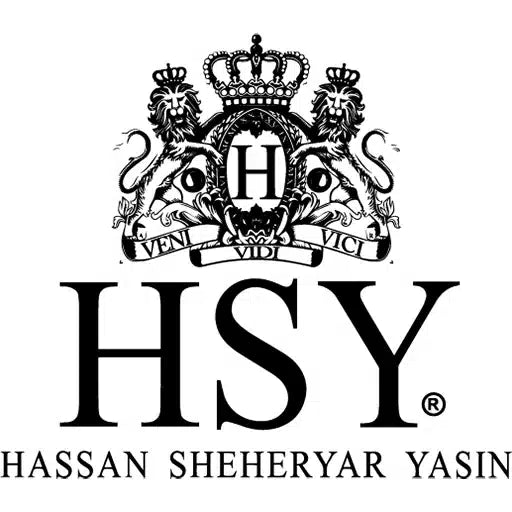
The most popular fabrics for Pakistani bridal dresses and why they matter
Share
Pakistani bridal dresses are more than just outfits; they are works of art crafted to embody elegance, tradition, and individuality. But what truly brings these masterpieces to life is the fabric. From the vibrant energy of Mehndi to the regal grandeur of Barat and the sophisticated charm of Walima, each fabric plays a unique role in how a bride feels and looks on her special day. Let’s dive into the most popular fabrics for Pakistani bridal dresses and why they matter.
Silk – The essence of royalty
Silk has long been the fabric of choice for Pakistani bridal dresses, especially for Barat and Walima. Its smooth, glossy texture adds a touch of luxury and sophistication, making any bride feel like royalty. The fabric’s natural shine beautifully reflects light, enhancing the intricate embroidery and zari work commonly found in bridal outfits.
Why it matters: Silk’s lightweight yet rich texture makes it perfect for heavily embellished lehengas, shararas, and sarees. It drapes well and feels soft against the skin, providing both comfort and grandeur.
When it’s worn: Silk is most commonly worn on Barat and Walima, where brides want to showcase an opulent and elegant look.
Velvet – The definition of opulence
Velvet is synonymous with luxury. Its rich texture and deep colors make it a popular choice for winter weddings, particularly on Barat. Velvet suits, lehengas, and shawls are often adorned with heavy embroidery, gold work, and intricate motifs, exuding timeless elegance.
Why it matters: Velvet offers warmth, which makes it ideal for cooler seasons. It also has a rich depth that highlights the intricate embroidery work, creating a captivating and majestic look.
When it’s worn: Velvet bridal dresses are most commonly seen during Barat ceremonies, especially in colder months when brides want to look stunning while feeling cozy.
Organza – The dreamy fairytale fabric
Light, sheer, and ethereal, organza is a fabric that embodies romance. It’s frequently used for Mehndi outfits and dupattas, giving a delicate, whimsical touch to bridal wear. Its translucence allows designers to layer fabrics, creating depth and dimension in the ensemble.
Why it matters: Organza’s lightweight nature makes it perfect for playful, colorful, and intricately embroidered Mehndi outfits. It’s ideal for creating dramatic dupattas and flowy silhouettes that add grace to the overall look.
When it’s worn: Organza is mostly chosen for Mehndi dresses, where the emphasis is on vibrant colors, comfort, and stylish flair.
Net – The fabric of grace
Net fabric has taken the bridal fashion scene by storm, especially for Walima ensembles. Its delicate structure allows designers to experiment with layering and embroidery, resulting in regal yet airy outfits. The see-through quality of net fabric offers a contemporary touch, making it a favorite among modern brides.
Why it matters: Net fabric offers unmatched versatility. Whether it’s a net saree, a dupatta, or a lehenga choli, the fabric provides a sophisticated canvas for embellishments while keeping the ensemble light and breathable.
When it’s worn: Net is most often chosen for Walima dresses, allowing brides to exude elegance and grace with intricate embroidery and flowing silhouettes.
Chiffon – The flowing beauty
Chiffon is a beloved fabric for Pakistani bridal wear, known for its sheer elegance and graceful draping. Its lightweight nature makes it ideal for long dupattas and layered lehengas. Chiffon’s soft texture allows it to cascade beautifully, enhancing the overall allure of the bridal attire.
Why it matters: The fabric’s airy feel makes it perfect for both Mehndi and Walima outfits. Its smooth texture also provides a sophisticated contrast when paired with heavy embroidery or embellishments.

When it’s worn: Chiffon is commonly seen in Mehndi and Walima outfits, where brides aim for an effortless yet strikingly graceful appearance.
Tissue – The delicate statement
Tissue fabric is a lightweight, shimmering material that gives bridal dresses a delicate, luxurious touch. Its subtle sheen adds an ethereal quality to lehengas and sarees, making it a popular choice for Walima attire.
Why it matters: The understated sparkle of tissue fabric enhances the beauty of intricate embroidery without overpowering it. It offers a graceful yet eye-catching appearance that many brides adore.
When it’s worn: Tissue is mostly used for Walima outfits, where the emphasis is on elegance and sophistication.
Why fabrics matter
The choice of fabric for a Pakistani bridal dress goes beyond aesthetics. It influences the comfort, elegance, and overall experience of the bride on her special day. From the luxurious feel of silk to the cozy warmth of velvet, each fabric contributes to creating a bridal look that makes the bride feel confident, beautiful, and empowered.
Whether you’re a bride-to-be or simply a lover of traditional bridal fashion, understanding the role of fabric in Pakistani bridal dresses will help you appreciate the artistry that goes into every stitch and fold.
Ready to find your perfect bridal fabric? Let your dress be a reflection of your story and step into your big day with confidence and grace.







